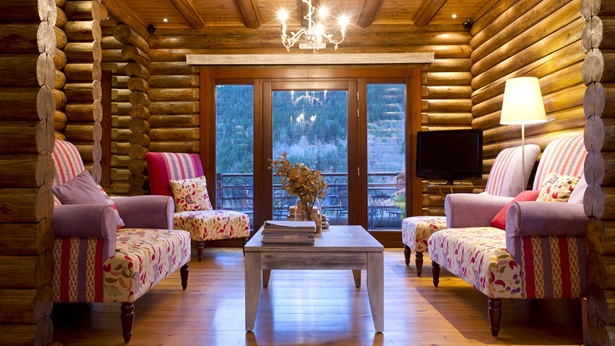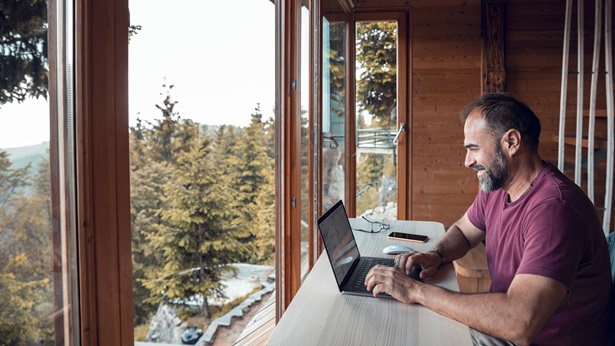Smart Lighting Strategies for Your Log Home
Take a close look at photos of log and timber homes, and you’ll notice that lighting has the subtle power to make small rooms look open and airy, or large rooms appear cozy and inviting. Designers will often refer to this as a lighting strategy.
You will need a lighting strategy for your dream log and timber home as well. Unfortunately, the most common mistake made by log and timber home buyers is under budgeting on the lighting needs for their new home, according to the experts with the Log and Timber Homes Council, which has been helping buyers made educated decisions since 1977. That’s because the wood in the walls and ceilings absorbs light. Add vaulted ceilings and you need far more lumens than a conventional home. How much more? Roughly twice as much as a conventional home with drywall.
You don’t want to under-budget in this category, since your dream home will have to work for you as you age. After age 60, we need three times the amount of light we needed at age 19 to accomplish the same task.
Cost
There are no universal rules on lighting costs. The materials in your home that help or hinder the reflection of light will influence the number of fixtures you need. This includes room sizes, color of cabinetry, paneling and flooring. Fixtures and the costs of labor to install them will also vary.
If you’re on a budget (and who isn’t these days), focus on wiring your home generously for a variety of fixture locations. Because fixtures are easy to replace, you can employ less expensive fixtures till you can afford to upgrade later to more artistic and custom illumination.
Lighting Basics
There are three basic types of lighting — general, task and accent — and your home should include all three.
- General lighting takes the place of sunlight, enabling you to see and move about safely.
- Task lighting helps you perform specific tasks such as cooking or reading.
- Accent lighting adds drama to a home by directing eyes toward a specific area.
Light Sources
Ceiling fixtures are practical for general lighting in busy areas. Wall-mounted fixtures can furnish general, task, and accent lighting. Chandeliers can be used in foyers, bedrooms or over a living room grouping. Pendants are suspended from the ceiling and can be used for task lighting. Track lighting, once considered as tacky as green shag carpeting, has come light years in appeal and convenience.
Recessed lighting is also useful, employed in ceilings or under eaves outside. In the bathrooms lighting strips above sinks supply task lighting for grooming. There are also small specialty lamps, such as clip-on lights, adjustable task lights and mini-reflector spotlights. Don’t forget floor or table lamps. They have their place, too.
Exterior Lighting
Exterior lighting is needed for both aesthetic and safety reasons. For safety, illuminate steps, paths and driveways to prevent after-dark mishaps. Low-voltage lights installed under handrails, stairs and around decks increase the fun of outdoor entertaining. You can draw attention to key architectural features, such as an entryway or gable. You can also highlight the natural features of the landscaping.
Controls
Lighting control has moved beyond on/off switches. Today one can program a variety of lighting scenarios for each room and recall them instantly with a touch of a button from a hand-held remote. Dimmers are also controlled with touch, slide or rotary switches. Other controls include timers, photo sensors and motion detectors.
Strategy
When planning your lighting strategy, look at the activities that occur in each room, the atmosphere you want to create and the decorative elements you wish to emphasize. Some lighting suppliers have engineers on staff to assist you with coming up with a strategy for your particular floor plan.



